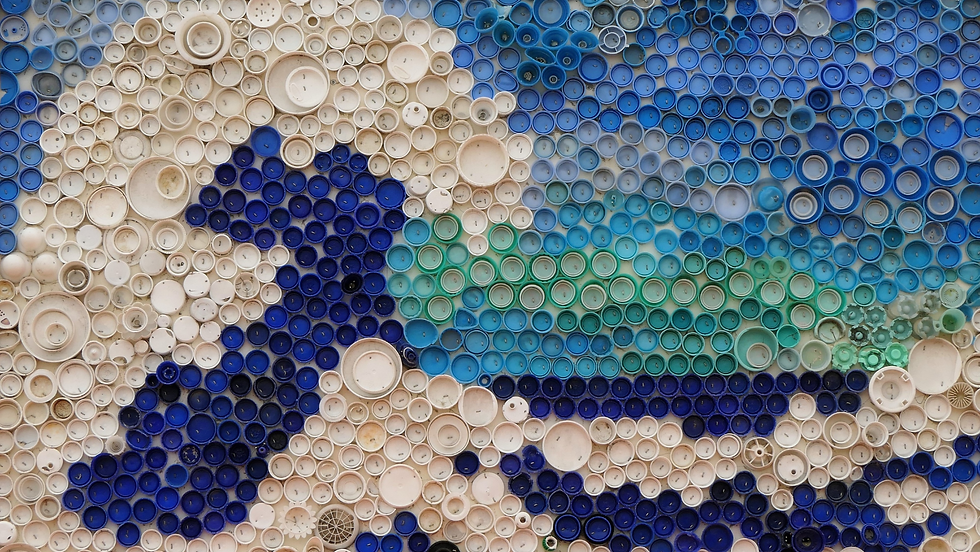How students can help tackle plastic pollution - Next Wave
- AUSMAP

- Aug 6
- 3 min read
A Spotlight on the next generation of ocean advocates.
This is our first instalment of next wave - stories from the next generation of youth ocean ambassadors. In this edition, we are introducing our first Next Wave Youth Advocate, Christina Ding.
Christina is a Year 10 student at Methodist Ladies’ College in Melbourne. Passionate about protecting the planet, she became more aware of environmental issues like plastic pollution and climate change during her school’s month-long outdoor program, Marshmead. She enjoys exploring nature and sharing its beauty through drone videography and photography, using her voice to inspire others to take action.
Vol 1.
How students can help tackle plastic pollution
World Environment Day 2025 By Christina Ding

Each year, World Environment Day shines a spotlight on a critical issue threatening our planet. This year’s theme—plastic pollution—is one many of us are already familiar with, especially at school. Whether it’s through clubs, classes, or projects, we’ve probably all heard about the dangers of plastic.
But now, just after World Environment Day, it’s crucial we do more than simply remember its message. Awareness isn’t enough—we need action. Right now, the world generates over 400 million tonnes of plastic every year. Around 8 million tonnes end up in the oceans—equivalent to the weight of 2 million elephants.
In Australia alone, around 100,000 marine animals — including sea turtles, seabirds, whales, and dolphins — are killed by plastic pollution each year, with many more decomposing unseen on the ocean floor. And beyond directly harming wildlife, plastic fuels climate change through greenhouse gas emissions from oil extraction and processing.
It all feels overwhelming—but here’s the good news:
Students can help more than you might think. By making small changes in our daily lives and encouraging others to do the same, we can make a real impact. So, what are some simple actions that we can all take?
Reduce Plastic Use

Reducing plastic use is one of the most effective things we can do. And it doesn’t mean turning your life upside down—it’s about small, conscious choices.
Swap glad wrap for reusable containers when packing your lunch
Say no to disposable cutlery, straws, coffee cups—bring your own metal straw and keep-cup
Ditch bottled water and use a reusable water bottle
Reuse Creatively

Reusing plastic doesn’t have to be boring. It can be creative and fun!
You can make crafts and household items from used plastic, such as bottle cap mosaics, toy cars, or homemade organisers.
Recycle Responsibly

Right now, plastic is such a ubiquitous presence in our lives that it isn’t possible to avoid it completely. This brings us to recycling—to give your plastic waste a new life.
It is important to make a conscious decision of choosing the correct bin for your waste. If you’re unsure, check the local recycling guidelines and avoid “wish-cycling” (putting things in the recycling bin hoping they are recyclable).
Limit microplastics

Microplastics are everywhere. These tiny pieces of plastic harm our environment and our health. And one of the biggest sources? Our clothes. Each wash can release up to 1.5 million microfibres per kilogram of synthetic fabric. That’s an estimated 35% of all primary microplastic pollution.
Here’s how to reduce microplastic pollution:
Limit purchase and use of synthetic textiles, such as polyester, nylon, and acrylic
Choose natural fibres (like cotton and wool) when possible
Air-dry your clothes—dryers release even more microfibres.
Retrofit your washing machine with a microfibre filter
Spread awareness

Beyond implementing changes in your own home, you can also spread awareness of our plastic pollution problem and inspire others to take action.
Participate in or organise local cleanups
Share tips and stories through school newsletters, clubs, or assemblies.
Launch plastic-free initiatives at your school—start with eliminating bottled water (did you know that a study showed 93% of bottled water samples contain microplastics?)
Without serious intervention, ocean plastic pollution is expected to triple by 2040. But we don’t need to wait for governments or corporations to act.
Your actions—no matter how small—matter. You can even eat ice-cream in a cone to save the cup and spoon!
Let’s make every day a step toward a cleaner, plastic-free planet.
_________________________
If you would like to be involved in our future Next Wave stories, send through your blog post to info@ausmap.org for your chance to be featured.






Comments